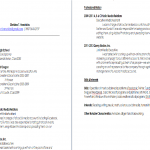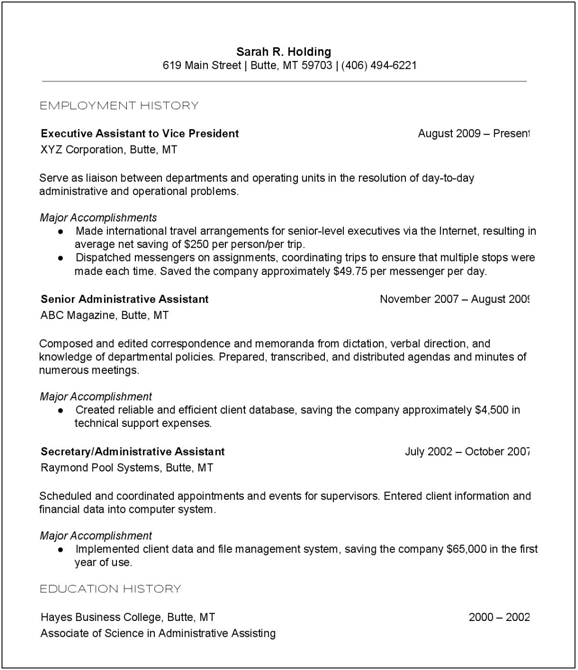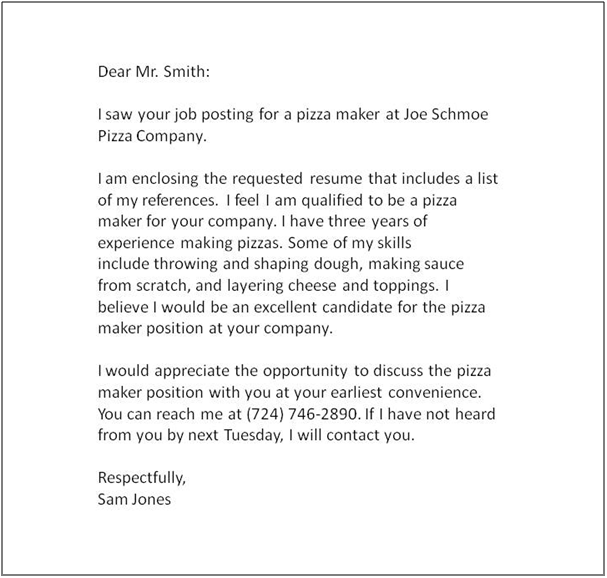
Lesson 10: Resumes & Cover Letters
In this lesson, we’ll be taking a look at the format of effective resumes & cover letters and what they should contain.
Objectives:
- To define what constitutes a good resume.
- To show the correct format of a resume.
- To define what constitutes a good cover letter.
- To show the correct format of a cover letter.
Quick Navigation through the Lesson 10:
In this lesson, we’ll be discussing two of the most widely used business documents—resumes and cover letters. We’ll be looking at both of these types of business documents, what they should contain and how they’re written. We’ll also be briefly discussing (toward the end of the letter) why the two go hand-in-hand.
I. Resume
1. Content
Click the image to download Resume Sample
 A resume is a document which summarizes all of your academic and professional achievements. This should contain all of the activities (academic or otherwise) and awards which you were able to achieve while you were in school. It should include your academic background (what degree you finished) as well as your professional background (where you worked and your previous designation). In addition to this, it should include your skills (e.g. proficiencies in technology—MS Word, MS Excel, MS PowerPoint, etc.) and your interests. This gives future employers a good idea of who you are.
A resume is a document which summarizes all of your academic and professional achievements. This should contain all of the activities (academic or otherwise) and awards which you were able to achieve while you were in school. It should include your academic background (what degree you finished) as well as your professional background (where you worked and your previous designation). In addition to this, it should include your skills (e.g. proficiencies in technology—MS Word, MS Excel, MS PowerPoint, etc.) and your interests. This gives future employers a good idea of who you are.
You should also include your contact details and your references.
The latter refers to people who you aren’t related to but who can vouch for your professional and personal character; this can be a former boss, a professor or an organization supervisor. While the references are optional, you should have them (full names, designations and contact details) on hand in case you are asked for them during or after the interview. It’s also important to tell your references that you listed them as references in case they should be contacted by the company.
Some information which you should not include in the resume are your reasons from leaving (or being terminated from) your last job, how much you were paid and other details of your employment. These things are always on a need-to-know basis; you will be asked about them during your interview if your future employers deem it necessary.
2. Format
A resume should have a 0.75 margin on all sides. It should be divided into different headers according to the section of the resume which you’re writing. Avoid using multiple fonts—although it’s permissible to use two fonts if necessary, using more fonts than this will make your resume confusing. If you need to emphasize the header or a point, make use of the bold face and italic settings. The body of the resume should be typed using the font size 11 or 12 and the headers should be sized 14 or 16 at the most. A 2×2 ID picture is optional.
Below is an example of a well-written and well-formatted resume.

In the example above, we’ll see that the person’s accomplishments and history are all listed down in chronological order. The resume is legible, neat and only makes use of two fonts.
II. Cover Letter
1. Content
A cover letter usually accompanies a submission of documents (a portfolio or a resume) which are meant to represent you professionally. This usually serves as an introduction to your work and gives the reader a glimpse into your brand of professionalism.
Your cover letter’s first paragraph should contain your reasons for submitting the specific document. Next, you should write about what the reader can expect from the documents you’re submitting. Finally, express what you hope will come about from this submission. Your cover letter should be short but sweet—limit the word count to a maximum of 450 words.
2. Format
Cover letters are usually single-spaced and typewritten using legible fonts. The font size is usually 11 or 12; the 1-inch margin is observed when writing cover letters.
While typically, cover letters are less than a whole page long there are certain instances where it’s acceptable to write a lengthy (1 full page) cover letter.
You should also include the date on which the letter was written/when the documents were submitted; this helps you remember when you submitted the letter and should the documents be lost, helps you keep track of them.
The first line should be addressed to the department head or to the institution which you’re sending the documents to: if you don’t know the specific person’s name, you can simply list down their designation—although it is, of course, better if you know who you’re addressing. This can usually be found on their website or on other data bases such as LinkedIn or Google +.
Next, you should talk about why you’re submitting the documents and what the recipient can expect to find in your portfolio or resume.
You should also mention why you think you would be a good person for the job/assignment which you’re applying for. This gives them an inkling as to who you are professionally and what your work ethic is like.
Lastly, you should include your contact details and indicate whether or not you’re going to inquire after the position or reception of your documents.
Whether or not you push through with this, it is still good to note it because it shows diligence. It also gives your potential employers the option of calling you or reaching out should they find your resume or portfolio interesting.
When ending a cover letter, never leave the sign-off blank. This is the last thing (aside from your name) which your future employers read—it should be interesting and should convey that your cover letter is well-thought-out.
Your sign-off should be respectful without being overly serious as this might imply that you didn’t bother to think of the sign-off and just used something generic. Sincerely, Cheers, and Respectfully Yours, are the best options in this case.
Below is an example of a well-written cover letter.

In this lesson, we were able to talk about two business documents which go hand-in-hand: resumes and cover letters. The former is a run-down of your history as a professional and the latter is an introduction to your career story. We were able to discuss what these two documents should and shouldn’t contain. In addition to this, we were able to take a look at an example of resumes and cover letters which followed the format we discussed.
Try Our Exercise And and Prep Yourself for the Real Thing
Our next lesson will be about business brochures. We’ll talk about what makes business brochures effective, how they should be written and what they should contain.
 + 1-888-827-0150
+ 1-888-827-0150 + 44-20-3006-2750
+ 44-20-3006-2750










